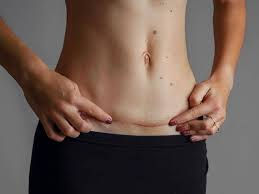What Is a Tummy Tuck and How Does It Work?
- Laraib Naeem
- Sep 9
- 3 min read
A tummy tuck is a popular cosmetic procedure designed to help individuals achieve a smoother, firmer, and more toned abdomen. Many people struggle with excess skin or stubborn fat in the abdominal area, often due to weight fluctuations, pregnancy, or aging. This treatment can effectively restore confidence by contouring the midsection and enhancing overall body shape. Understanding how a tummy tuck works is essential for anyone considering this procedure.
What Is Treatment and How It Works?
A Tummy tuck in Dubai(شد البطن في دبي), medically known as abdominoplasty, involves the removal of excess skin and fat from the abdomen while tightening the underlying abdominal muscles. This combination helps create a flatter and more defined waistline. The procedure typically involves:
Excess skin removal: Loose or sagging skin is excised to improve the abdomen's appearance.
Fat reduction: Localized fat pockets are often removed to enhance contour.
Muscle tightening: The abdominal muscles are sutured to provide a firmer core.
Skin repositioning: Remaining skin is pulled down and sutured to create a smooth surface.
This process works for individuals who want to address a protruding belly, loose skin after weight loss, or post-pregnancy changes that cannot be corrected through diet and exercise alone. The results are often long-lasting if a healthy lifestyle is maintained.

Importance of Treatment:
Undergoing a tummy tuck offers not just cosmetic benefits but also functional improvements. Its importance lies in:
Enhancing self-confidence and body image.
Improving posture by strengthening abdominal muscles.
Reducing the risk of skin irritation or infection caused by excess skin folds.
Helping clothes fit better and creating a more proportional silhouette.
People seeking significant changes in their abdominal appearance often find this treatment transformative, both physically and emotionally.
Types of Treatment:
Tummy tuck procedures can vary depending on the extent of correction needed. The main types include:
Full Tummy Tuck: Involves both the upper and lower abdomen, with extensive skin removal and muscle tightening.
Mini Tummy Tuck: Focuses on the lower abdomen and involves a smaller incision, ideal for minor skin laxity.
Extended Tummy Tuck: Combines a full tummy tuck with additional skin removal around the hips and flanks.
Fleur-de-Lis Tummy Tuck: Addresses both vertical and horizontal excess skin, often after massive weight loss.
Choosing the appropriate type ensures that the results are proportional, natural-looking, and aligned with individual goals.
Preparation and Aftercare:
Proper preparation and aftercare are crucial for a smooth recovery and optimal results. Key steps include:
Pre-procedure preparation: Maintain a healthy diet, stop smoking, and avoid certain medications that increase bleeding risk.
During recovery: Follow recommended rest periods, wear compression garments, and gradually resume physical activity.
Lifestyle maintenance: Balanced nutrition, regular exercise, and hydration support long-lasting results.
Following aftercare instructions reduces complications, enhances healing, and maximizes the cosmetic outcome.
Ideal Candidate:
A successful tummy tuck requires careful candidate selection. The ideal candidate is someone who:
Is close to their ideal weight and maintains a stable body mass.
Has excess abdominal skin or weak muscles due to pregnancy, aging, or weight loss.
Has realistic expectations about the procedure and recovery process.
Is in good overall health, without conditions that could impair healing.
This ensures the procedure delivers the best aesthetic results and minimizes potential risks.
Risks and Benefits:
Like any surgical procedure, a Tummy tuck(شد البطن) comes with risks and benefits. Understanding both is essential:
Benefits:
Flatter and firmer abdomen.
Improved muscle tone and posture.
Enhanced body confidence and clothing fit.
Risks:
Swelling, bruising, and temporary discomfort.
Scarring, which may fade but not disappear completely.
Rare complications like infection or delayed healing.
Proper planning, realistic expectations, and adherence to aftercare significantly reduce the risk of complications.
FAQs:
Can a tummy tuck remove stretch marks?
It can reduce stretch marks, especially those located on the lower abdomen, but it may not eliminate them entirely.
How soon can I resume exercise?
Light activities can begin in a few weeks, but strenuous exercise is usually delayed for 6–8 weeks.
Will the results last forever?
Results are long-lasting with stable weight and a healthy lifestyle. Significant weight changes or pregnancy can affect results.
Can men get a tummy tuck?
Yes, men can benefit from abdominal contouring, especially after weight loss or muscle separation.
Is the procedure painful?
Discomfort is normal during recovery, but it can be managed with prescribed pain relief and proper rest.
Conclusion:
A tummy tuck is a highly effective procedure for reshaping the abdomen, removing excess skin, and tightening muscles. By understanding how it works, its types, preparation, ideal candidates, risks, and benefits, individuals can make informed decisions about their treatment. Proper aftercare and lifestyle maintenance ensure the results are long-lasting, helping patients regain confidence and enjoy a sculpted, toned midsection.



Comments